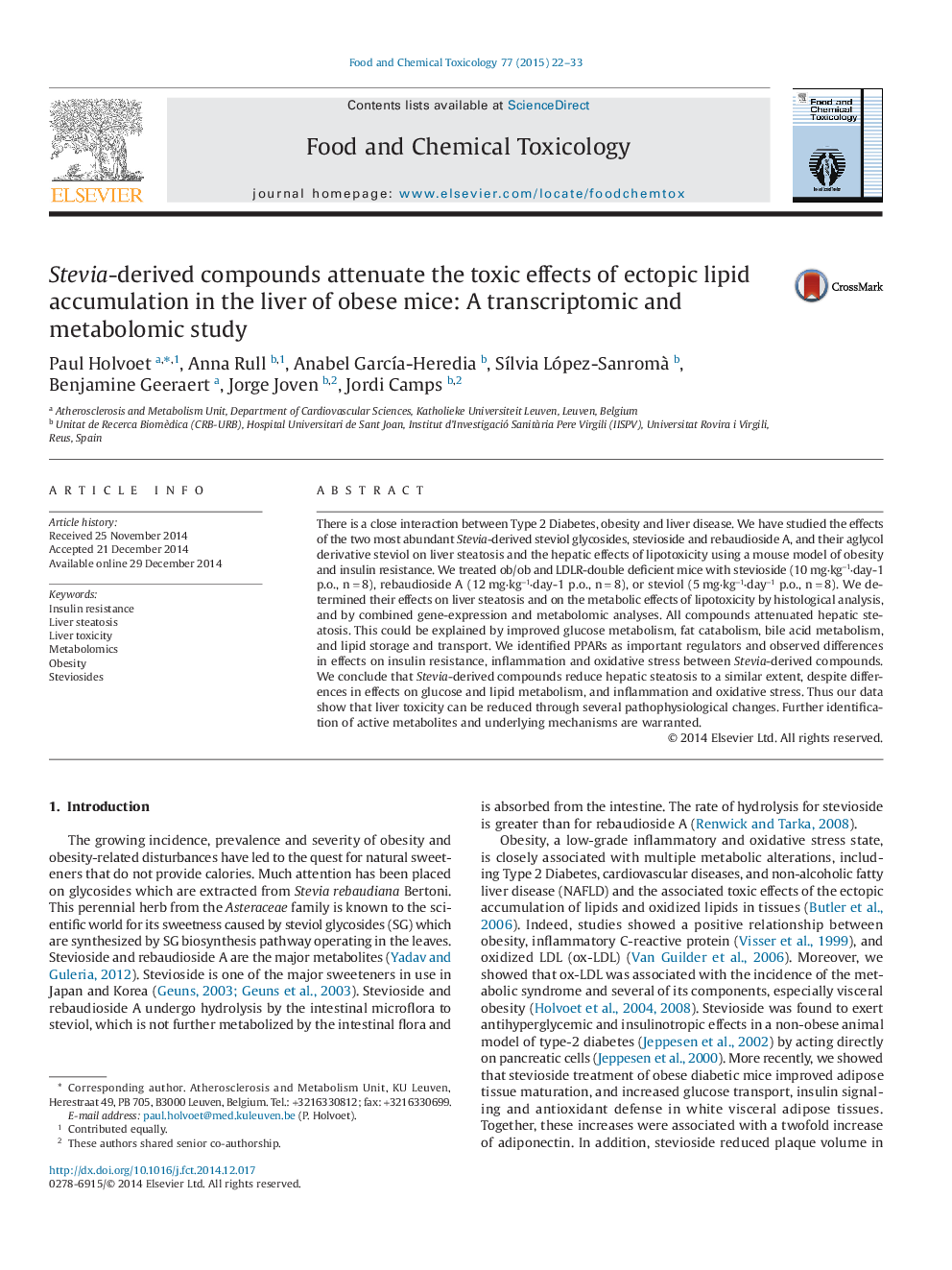| Article ID | Journal | Published Year | Pages | File Type |
|---|---|---|---|---|
| 2584956 | Food and Chemical Toxicology | 2015 | 12 Pages |
•Obesity is associated to the toxic effects of lipid accumulation in tissues, particularly in the liver.•Treatment with glycosides from Stevia rebaudiana improves insulin signaling and antioxidant defense in obese diabetic mice.•Stevioside-, rebaudioside A and steviol treatment produced decreased hepatic steatosis in obese insulin-resistant mice.•Nuclear receptors PPARα, PPARγ and PPARδ were identified as central regulators of the effects of Stevia-derived molecules.•Stevia-derived molecules protect from the toxic effects of ectopic lipid accumulation in the liver of obese mice.
There is a close interaction between Type 2 Diabetes, obesity and liver disease. We have studied the effects of the two most abundant Stevia-derived steviol glycosides, stevioside and rebaudioside A, and their aglycol derivative steviol on liver steatosis and the hepatic effects of lipotoxicity using a mouse model of obesity and insulin resistance. We treated ob/ob and LDLR-double deficient mice with stevioside (10 mg⋅kg−1⋅day-1 p.o., n = 8), rebaudioside A (12 mg⋅kg−1⋅day-1 p.o., n = 8), or steviol (5 mg⋅kg−1⋅day−1 p.o., n = 8). We determined their effects on liver steatosis and on the metabolic effects of lipotoxicity by histological analysis, and by combined gene-expression and metabolomic analyses. All compounds attenuated hepatic steatosis. This could be explained by improved glucose metabolism, fat catabolism, bile acid metabolism, and lipid storage and transport. We identified PPARs as important regulators and observed differences in effects on insulin resistance, inflammation and oxidative stress between Stevia-derived compounds. We conclude that Stevia-derived compounds reduce hepatic steatosis to a similar extent, despite differences in effects on glucose and lipid metabolism, and inflammation and oxidative stress. Thus our data show that liver toxicity can be reduced through several pathophysiological changes. Further identification of active metabolites and underlying mechanisms are warranted.
